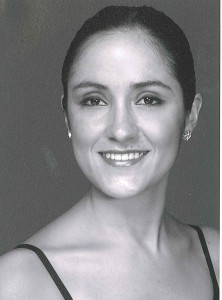by Allan Greene
 One of my all-time favorite ballets, and one of the great dance creations of the Twentieth Century, is Balanchine’s “Four Temperaments”. When I was Company Pianist with the Dance Theater of Harlem we must have performed it fifty times. I did maybe twenty performances as the piano soloist with orchestras in Paris, Houston and the Spoleto USA Festival. I am steeped in this work.
One of my all-time favorite ballets, and one of the great dance creations of the Twentieth Century, is Balanchine’s “Four Temperaments”. When I was Company Pianist with the Dance Theater of Harlem we must have performed it fifty times. I did maybe twenty performances as the piano soloist with orchestras in Paris, Houston and the Spoleto USA Festival. I am steeped in this work.
At the time I was performing it, however, I was completely unaware of the connection between the four medieval “temperaments” or “humors” (choleric, melancholy, sanguine, and phlegmatic) and the much more recent work of the Swiss psychoanalyst Carl Jung. In the early 1920’s Jung synthesized ideas dealing with the relationship between physiology and personality, many of which he had come across in readings about world civilizations, into what he called the Psychology of Type (his 1921 book was called Psychologische Typen). He noted how the differentiation of four personality types was common to the classical Greece (through the physician Galen), the medieval Persian physician Avicenna and early modern Europe.
At first Jung drew on these historical ideas to resolve the conflict he was having with his mentor, Freud. The two had a celebrated professional break-up in 1912, and Jung spent some time trying to reconcile with himself why this had occurred. Out of this he created the concepts of introvert and extrovert, which have morphed into touchstones of our modern psychology. In Psychologische Typen he extended the number of personality types to eight.
The idea for Balanchine’s Four Temperaments was not Balanchine’s (nor was it Galen’s) but, according to program notes for the American Symphony Orchestra prepared by Adrian Corleonis, came from the composer Paul Hindemith. Corleonis doesn’t show however where Hindemith came across the idea. It’s always possible that he was familiar with Carl Nielsen’s Second Symphony (1901), nicknamed also “The Four Temperaments”.
The essential idea in all of this is that there are four kinds of personality: one tending toward sadness (melancholy), one tending toward hesitance (phlegmatic), one tending toward cheerfulness (sanguine) and one tending toward anger (choleric). All human beings possess one of these four personality types, and, according to pre-Modern medical science, must be treated appropriately.
It is my belief that all pieces of music, too, are constituted of recognizable “personalities”, and the best performances of them understand and animate the interaction of these personalities. [Read more…]








